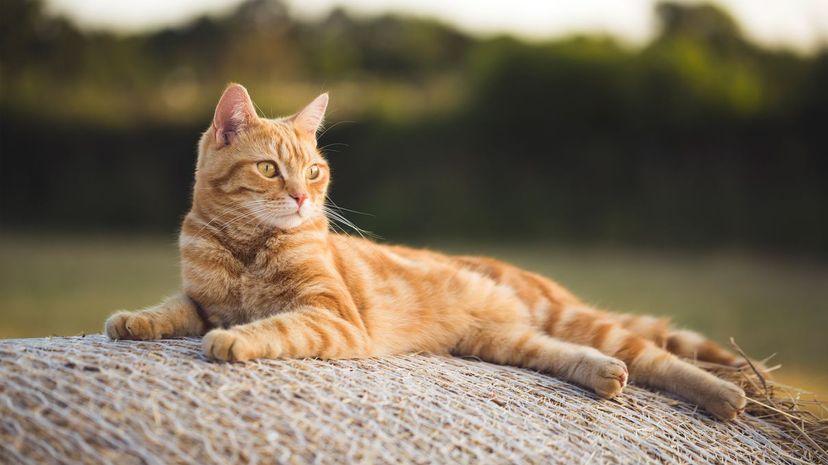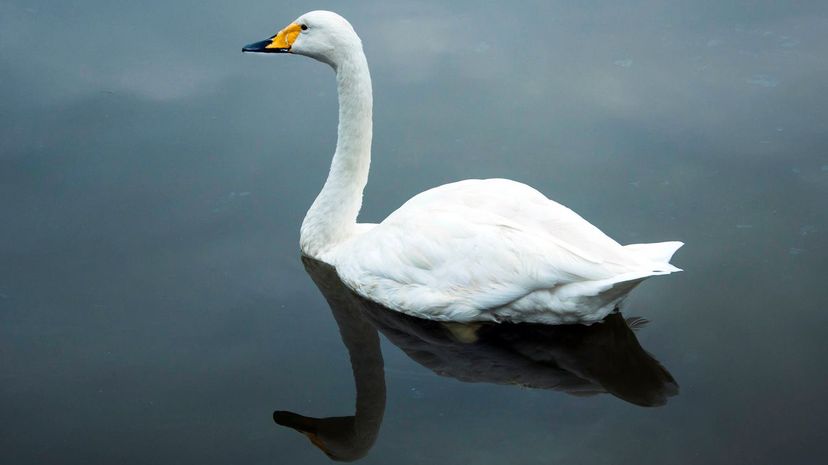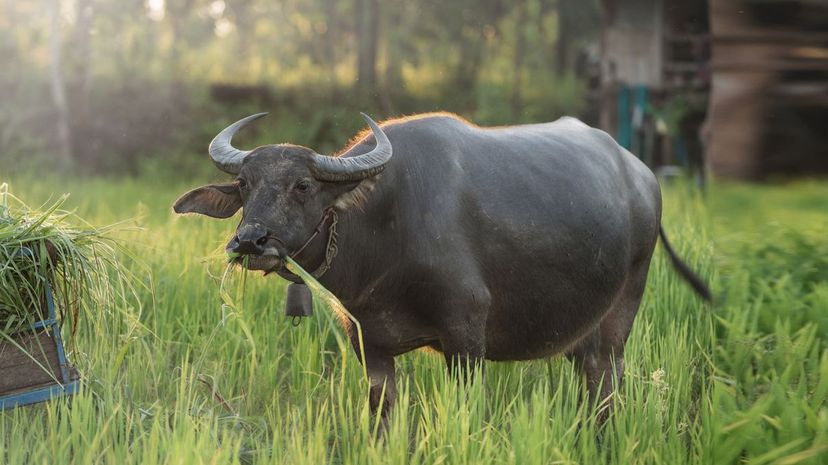
About This Quiz
Are you ready to ace this ultimate farm animals quiz? Well, let's get you warmed up with a dash of humor, shall we?Â
What do you call a chicken crossing the farm? Poultry in motion!Â
Which farm animal keeps the best time? A watchdog!
Can't get enough? OK, one more:
What was the farmer talking about while he was milking the cows? Udder nonsense!
Well, if your knowledge of farm animals is no-nonsense, then we think you might just have some Old MacDonald in your genes. Get ready because we are about to quiz you on every farm animal, big and small, feathered and horned. Are you up for the challenge?
From traditional chickens to cows, horses and goats to the delicacies of pigeon, honey bees and Guinea pigs, we want to know just how far your recognition of farm animals goes. It's time to rise with the roosters and take charge of this quiz like a gobbling turkey. Will you score big like a farm cat and his successful capture of a furry friend? Or will you retreat slowly down the stream like an aging swan?
The time has come. Think you have what it takes to boss this quiz around like a herd of sheep? Don't be the ba ba black sheep, get after that wool now and good luck!

Although it takes humans more than a year before they can walk, horses are off walking and running within 90 minutes of being born. A baby horse is known as a foal, while its father is a stallion and its mother is a mare.

Contrary to popular belief, pigs are rather intelligent. In fact, they have been ranked the fifth-most intelligent animal in the world. Research has shown them to remember and locate objects easily, and their sense of direction is on point with dogs and chimpanzees.

There are a variety of reasons a farmer would choose to raise ducks. Not only are they a great producer of eggs and meat, but they also help keep the garden clean and healthy. Clean because they eat bugs and grubs, and healthy because their bowel movements serve as a great fertilizer.
Advertisement

Each year, farmers across the world raise 50 billion chickens. These chickens are raised for both meat and eggs. While many are caged, the market for free-range chickens is growing immensely. Next time you're at the grocery store, take a closer look at the labels, and be part of the change.

On various farms, geese are often seen roaming through fields of crops feeding on weeds, and of course fallen produce. Geese, particularly Chinese geese, have been used for weed control for ages. Did you know that geese can live outside at night? Just be sure they are hidden from foxes.

Camels are kept mainly by nomads particularly on the continents of Africa and Asia. While they can be raised for meat, they are more often grown for their milk, wool and transportation purposes. It is said that a nomad can live strictly off of their camel's milk for nearly one month.
Advertisement

There is as much a variety of cows as there are dogs and cats in the world. Whether they are raised for beef or veal, milk or hides, cows make up approximately 1.4 billion of the cattle population across the globe. Did you know that cows are red-green colorblind?

Why keep cats around the farm? To protect against rodents, of course! The quick nature of a cat allows them to hunt and capture unwanted visitors. But just because they feed off of those vermin, doesn't mean you should not feed them at all. Keep that food bowl full of traditional cat food.

Though it is less common in the United States, Canada and Northern Europe, goat meat is a staple elsewhere in the world. In fact, goat meat is the most consumed meat per capita worldwide, and with a five-month gestation period, the average goat has two baby goats per year.
Advertisement

Well, here's a fun fact: if you're ever in the presence of yak, be sure to watch your step. Their manure has no detectable odor! Perhaps this is why the manure, in its dried form, is used for fuel in Tibet. Additionally, farmers raise them for milk, meat and protection.

Wapiti is a Native American word meaning "light-colored deer." While elk are related to deer, they are significantly larger. A typical elk weighs between 325 and 1,100 pounds and stands 4 or 5 feet tall. Add in the antlers, and that height nearly doubles.

It should come as no surprise that dogs maintain their status as man's best friend even on a farm. Their roles and responsibilities are essential as they help to round up and move herds of cattle and other animals. Dogs also help guard and protect chicken coops from potential predators.
Advertisement

Since quails can only fly short distances, they are often seen scurrying on foot to their destinations. As a member of the pheasant family, quails are raised mainly for their egg production. They produce anywhere from 200 to 365 eggs per year, with their fertility declining with age.

Anyone who's been to the Greek Islands may beg to differ, but China has more donkeys on its land than any other country in the world. While they don't always look like it, a donkey is typically stronger than a horse of the same size. Farmers use them to protect against fox, coyotes or stray dogs.

What exactly is a mule? It is a cross between a female horse and a male donkey! On a farm, they are mainly tasked with pulling, riding and carrying heavy loads. While you might think that all of this manual labor leads to a shorter lifespan, mules tend to be healthier and live longer lives than horses.
Advertisement

A female rabbit is called a doe, a male is a buck and a young rabbit is known as a kit. Put them all together, and you've got a bunch of rabbits - which is appropriate because rabbits live in groups. Did you know that more than half of the world's population of rabbits live in North America?

As the largest member of the deer family, it should come as no surprise that the average moose weighs more than 1,300 pounds. What is surprising, however, is that despite its enormous size, moose feel threatened by creatures of all sizes, including black bears and a pack of wolves.

Your back might hurt just looking at a dromedary camel, but this hump serves more purpose than you know. When food and water are unavailable, a camel can metabolize the fat stored in its hump. Does this mean a dromedary camel will never get "hangry?"
Advertisement

Made famous by the "The 12 Days of Christmas" song, yes, partridges are a real animal! Found throughout the world, the most famous gray variety is most commonly found in North America. Partridges enjoy eating seeds and on occasion, insects. Farmers may raise them for meat and eggs.

While ostriches are a flightless bird, that doesn't stop them from getting around, and quickly too! Ostriches are regarded as the largest and fastest running birds. They can sprint 45 miles per hour. For reference, a lion can run 50 miles per hour. See what we mean?

What do lamb and mutton have in common? They are both sheep! Lamb refers to the meat of a young sheep, while mutton is that of an adult. While sheep are a great source of fleece, they are also raised for their meat. Mediterranean cuisine, especially Greek and Turkish, often features sheep.
Advertisement

Want to visit a reindeer farm? Head to the Scandinavian or Arctic countries. There you will find native farmers raising reindeer primarily for meat. Keep your ears out too; reindeer make a clicking noise when they walk. They have a foot tendon that "clicks" over one of their foot bones.

While farmers tend to harvest their honey once per year in the fall, they can do it year-round. Honey bees help to produce nearly 1.5 million pounds of raw honey each year. This fact is staggering, considering that one bee will make just 1/12th of a teaspoon in its lifetime.

Most everyone in the United States has their opinions about pigeons, but these creatures who came by way of Europe are a delicacy in other countries. Pigeons are raised on farms typically for their meat. Don't scoff - their exceptional nutrition facts might have you contemplating a bite!
Advertisement

Turkeys gobble, right? Well, it depends on whether they are male or female! Did you know that female turkeys don't gobble? If you hear one, it's definitely male. While male turkeys use their gobble to entice the females (great move!), they also use it as a way to ward off other males.

When a rooster crows, it's not just waking everyone up on the farm; it is actually crowing to mark its territory. Whether or not there are other roosters in the vicinity, the rooster has the instinct to defend their space while they hunt for food.

Not all birds can fly, and the emu is one of them. These birds are found mainly in Australia but are also farmed in North America, Peru and China. They are raised for their meat, leather, feathers and oil. Emu is considered a red meat because of its color and beef-like pH value.
Advertisement

Did you know that silk is obtained from the cocoon of the larvae of a mulberry silkworm? The biggest silk producers in the world are China and India, while Uzbekistan and Brazil also contribute production. But without fresh mulberry leaves on hand, none of this would be possible.

The various species of swan include the Black-necked, Black, Mute, Trumpeter, Tundra, Whistling and Whooper. Closely related to the goose and duck, swans are a symbol of grace and beauty, but when necessary, they can fly up to 60 miles per hour.

Though activists disagree, deer are raised for their meat, particularly in New Zealand. In fact, New Zealand is the largest supplier of venison in the world. Farmers who wish to raise deer need to ensure plenty of acreage on their farm because deer need their space.
Advertisement

Native to South America, alpacas live high in the Andes Mountains of Chile, Peru and Bolivia. Many farmers like to raise alpacas because of their natural lawn mowing tendencies. Alpacas eat grass and other plants from the top, as opposed to cattle who pull it by the root.

There are an estimated 1.5 million domestic bantengs in the world, mostly in Southeast Asia. They are known as Bali cattle and have a lifespan of about 25 years. Raised mainly as working animals on the farm, bantengs eat grass, bamboo, fruit, leaves and branches.

So it's not actually a pig? No, it's a rodent! And it's not from Guinea? No, it's from the Andes in South America! Have we confused you yet? Guinea pigs are a popular farm animal in South America, particularly among the Andean people. They raise them for meat, which is a staple of their cuisine.
Advertisement

Did you know that llamas communicate with each other by humming? As a cousin of the camel, llamas have height in their genes. Some have been known to grow as tall as 6 feet. Much like alpacas, llamas are great guard animals and used mainly for fiber production.

Did you know there are an estimated 130 million buffaloes in the world and more than 95% of them are in India? Indian farmers rely on them for tilling rice fields and producing milk. A buffalo's milk is said to be richer in fat and protein than other dairy cattle.

Native to the Sahara desert, the white antelope is known by its genus name Addax. Because they are slow-moving, these antelopes are often an easy target for predators such as lions and cheetahs. Several countries, including the United States, have private ranches dedicated to protecting this endangered species.
Advertisement

Elands are found in the grasslands of Africa. Did you know that their lifespan can vary depending on whether they are out in the wild or raised on a farm? Those in the wild live between 15 and 20 years while elands on a farm, or in captivity as some would say, can reach 25 years of age.

Rheas are flightless birds with long legs and long necks. They are found mainly in South American countries including Argentina, Paraguay and Bolivia. Rheas are raised for their feathers, which are used for producing feather dusters. Other uses include leather and meat.

Standing between 6 and 10 feet tall and weighing between 1,000 and 2,000 pounds, bison are the largest land animal in North America. Despite their large size, they are quick and agile. They can spin, jump and run up to 35 miles per hour. Did we mention they are great swimmers as well?
Advertisement

Farmers appreciate the fact that zebus are resistant to viruses and parasites typically found in other cattle. Recognized for their single, often bony hump just past their neck, zebus are hunted by wild cats, bears and humans who raise them for meat and milk. Their waste makes great manure too.